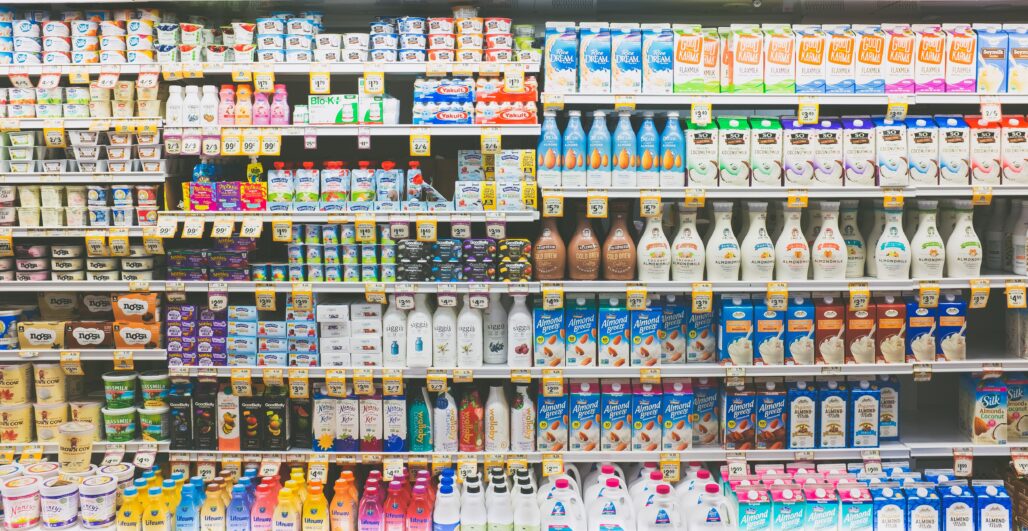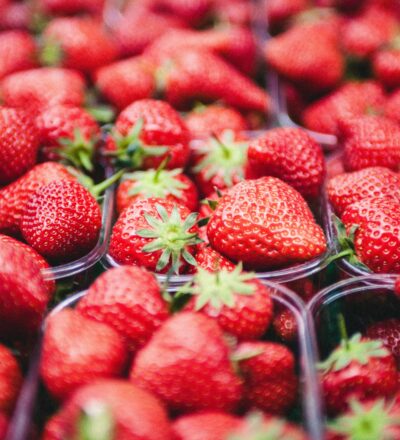To feed the growing world population without placing an untenable burden on our environment, we need to redesign our food industry in a sustainable way, with new process technologies that help us maximize nutritional values, and minimize waste in the food chain.
A huge task that no sole company can easily undertake on its own. That is why the Institute for Sustainable Process Technology (ISPT) unites parties from both the food industry, as well as from universities and other industries, to tackle this task together.
Drying and dewatering
There are several processes in the food industry where more sustainability can be established, which are each being addressed in different clusters at ISPT. The cluster Drying and Dewatering focusses on one of the most important process steps in the food industry, as all kinds of products require drying: from vegetables and dairy products to paper and sewage.
Peter de Jong, ISPT’s expert on food and agriculture, clarifies why. ‘The extraction of water prolongs the food’s shelf life. It also makes many food products easier to transport because turning something into a powder reduces its volume. Each of these benefits are very important to the food industry. At the same time, drying and dewatering is thé most energy intensive process in the food industry, so improving our drying and dewatering technologies will have an enormous effect on sustainability.’
The food industry applies various drying methods. There is convective drying for solids and conductive drying for liquids. Both are thermal drying methods, convective through direct contact between the solid material and the heat source, and conductive through the indirect contact of heat being transferred to fluids. But the technique that De Jong considers the most promising, does not involve heat – and is therefore less energy intensive.
‘Freeze drying,’ says De Jong. ‘When you do this properly it is a very effective way to separate proteins and other nutrients from the frozen water. So this really is a technology wherein a joint investment is being made.’
Creating breakthrough technologies
ISPT’s cluster for Drying and Dewatering includes partners from different fields and industries such as, among others, international dairy company FrieslandCampina, chemical giant DSM, global food company Danone, and the universities of Eindhoven and Wageningen. De Jong explains how the cluster operates.
‘Our partners gather to exchange ideas on what we want to achieve. Such as: how can we extract water with, for instance, 30 percent less energy, without impairing the functional qualities of the food products? Which topics do we need to address, which technologies can be improved, and are there new technologies being developed at universities that we can implement?’
Margrethe Jonkman, corporate director at FrieslandCampina, is very pleased with the cluster. ‘Reducing energy use in our production processes is one of FrieslandCampina’s main priorities and ISPT specializes in such a sustainable process technology. They connect us with universities and international top scientists on the one hand, and on the other hand with colleagues from the food industry – but also other industries. I firmly believe that any breakthrough technology requires a combination of different viewpoints from various disciplines. No company can do that on its own. So in order to solve major sustainability problems we need to invest collectively. ISPT is a crucial partner in this regard, because they shape the cooperation. They know how to bring the right parties together.’
The Sustainability Development Goals
‘Sustainability is a really broad theme in the food industry,’ Jonkman continues. ‘To establish a sustainable society by 2030, there are 17 UN Sustainability Development Goals, drawn up by governments, the industry and NGOs. The SDGs range from Gender Equality to No Poverty, but of those seventeen there are five in which the food industry can play a crucial role and Clean Energy is one of those. Together with ISPT, we study that SDG in particular. At what points we can reduce our energy use in the whole production process, from the moment the milk arrives in the factory? Do we use fossil or renewable energy? Can we improve the design of the dryer? Or should we take different kinds of drying processes in consideration, like extracting water with a high capacity membrane system?’
But energy reduction in the factory is not FrieslandCampina’s only concern. To achieve the other SDGs wherein the food industry plays an important part, they also pay a lot of attention to packaging and sustainability at the farm, like carbon footprint reduction, biodiversity, and landscape and nature preservation.
‘We are not a packaging manufacturer, nor a waste recycling company,’ Jonkman elaborates, ‘which is why we collaborate closely with our suppliers. Dairy requires packaging from compositive materials: plastic, but also – mainly – cardboard, usually provided with a thin aluminium or plastic layer to keep it from leaking. It needs to be practical for daily use by the consumer, but we also need to consider its impact on our environment. What can we do to close the loop? Especially concerning the return of package materials, because in a lot of places outside the Netherlands that isn’t possible yet.’
Mild fractionation for food
Where in the Drying and Dewatering cluster the focus is on energy reduction, the cluster Mild fractionation for food works on closing the nutrient cycle. Fractionation refers to the extraction of valuable components like proteins and other fractions from residual flows, beet leaf and grain waste for instance. Mild refers to the way it is processed.
Food commodities processed with mild fractionation may be less pure, but they are often healthier than food that is intensively processed. De Jong: ‘If you want to use everything without throwing anything away, you need to take a careful look at the raw materials. And then you start to explore what can be made from its residual flows. That doesn’t mean that every by-product will lead to a new food product, but it can result in a new ingredient. There is an extensive network of raw materials available, from potatoes and sugar beets to milk. What kind of products can we make out of its residuals and what kind of process routes are required for those products? It needs to be a process that is both functional and cost-effective, as well as sustainable.’
De Jong mentions several possible solutions, like high capacity membrane systems (filter systems that are less prone to pollution) and industrial chromatography, ‘in which we inject a sample in a small tube filled with a substance that can separate molecules. We can do this based upon size, in which case the tube is filled with something that lets the small molecules pass first. We do this with large proteins and polymers for instance, that stay behind in the tube. Or we can do it based upon charge, in which case the tube is filled with something that separates negatively charged molecules from positively charged molecules. This method will work with any charged molecule, including large proteins, small nucleotides like some sugar molecules, and amino acids. But we usually apply chromatography solely for analysis in a laboratory, to apply it industrially requires a considerable scaling up to large volume flows. We are really working on that.’
Maximizing nutrient density
The dairy industry does not have any residual flows, according to Jonkman. ‘Milk is such a great starting point,’ she exclaims enthusiastically. ‘We use everything of it. Dairy is one of nature’s richest products because it contains so many nutrients: proteins, vitamins, minerals, fats. That is why we call milk nutrient dense. At FrieslandCampina we try to optimize those nutritional values as much as we can, with as little processing as possible, to preserve the original characteristics of our dairy. Milk always requires a certain amount of heating for microbiological safety and a longer shelf life. Some products thicken when they are heated, making the nutritional value even more concentrated. But with too much heating a dairy product can often become difficult to digest, which is why we prefer minimal processing.’
Consumer panels and SME
Both Jonkman and De Jong advocate cross-sectoral cooperation, and they both mention two more partners they prefer to involve. ‘At FrieslandCampina we want to add value for the consumer,’ says Jonkman, ‘so we work with consumer panels for new concepts and new developments. We involve them in different stages of the production process, for example with new flavors, but also in matters of sustainability. This way we learn what our consumers find important, like biodiversity and cows at pasture instead of in the barn.’

De Jong strongly supports collaboration with small and medium-sized enterprises (SMEs). ‘At ISPT we specifically look for those connections, because innovation frequently originates from SMEs. Large companies are often less agile because of their scale. SMEs cannot compete with them on the price, so they are usually more focused on developing new technologies. That is why ISPT hosts meetings where SMEs can present their innovations. If these technologies prove to be of interest to the whole sector they can be tested further with funding and support from the other parties participating in the cluster.’
The right partners
Redesigning our food industry to a fully sustainable system where nothing goes to waste, but that still produces wholesome food with a maximum nutritional value, remains an immense challenge that cannot be solved by one party alone. However, there are ample innovative technologies available or being developed in and around the food industry. And making real progress is more often than not just a matter of bringing the right partners together, which is why ISPT has initiated several clusters like their cluster for Drying and Dewatering, to benefit all participants in those clusters.
